
The Innovators: How a Group of Inventors, Hackers, Geniuses and Geeks Created the Digital Revolution
by
Walter Isaacson
Published 6 Oct 2014
The Case for Donald Davies,” http://www.academia.edu. 59. Author’s interview with Leonard Kleinrock; Leonard Kleinrock oral history, conducted by John Vardalas, IEEE History Center, Feb. 21, 2004. 60. Author’s interview with Leonard Kleinrock. 61. Kleinrock oral history, IEEE. 62. Segaller, Nerds, 34. 63. Author’s interviews with Kleinrock, Roberts; see also Hafner and Lyon, Where Wizards Stay Up Late, 1009; Segaller, Nerds, 53. 64. Leonard Kleinrock, “Information Flow in Large Communications Nets,” proposal for a PhD thesis, MIT, May 31, 1961. See also Leonard Kleinrock, Communication Nets: Stochastic Message Flow and Design (McGraw-Hill, 1964). 65.
…
See also Leonard Kleinrock, Communication Nets: Stochastic Message Flow and Design (McGraw-Hill, 1964). 65. Leonard Kleinrock personal website, http://www.lk.cs.ucla.edu/index.html. 66. Leonard Kleinrock, “Memoirs of the Sixties,” in Peter Salus, The ARPANET Sourcebook (Peer-to-Peer, 2008), 96. 67. Leonard Kleinrock interview, Computing Now, IEEE Computer Society, 1996. Kleinrock is quoted in Peter Salus, Casting the Net (Addison-Wesley, 1995), 52: “I was the first to discuss the performance gains to be had by packet switching.” 68. Author’s interview with Taylor. 69. Author’s interview with Kleinrock. 70. Donald Davies, “A Historical Study of the Beginnings of Packet Switching,” Computer Journal, British Computer Society, 2001. 71.
…
Donald Davies, “A Historical Study of the Beginnings of Packet Switching,” Computer Journal, British Computer Society, 2001. 71. Alex McKenzie, “Comments on Dr. Leonard Kleinrock’s Claim to Be ‘the Father of Modern Data Networking,’ ” Aug. 16, 2009, http://alexmckenzie.weebly.com/comments-on-kleinrocks-claims.html. 72. Katie Hafner, “A Paternity Dispute Divides Net Pioneers,” New York Times, Nov. 8, 2001; Les Earnest, “Birthing the Internet,” New York Times, Nov. 22, 2001. Earnest minimizes the distinction between a “store and forward” system and a “packet switch” one. 73. Leonard Kleinrock, “Principles and Lessons in Packet Communications,” Proceedings of the IEEE, Nov. 1978. 74.

Tubes: A Journey to the Center of the Internet
by
Andrew Blum
Published 28 May 2012
“Not ideas about the thing but the thing itself,” as Wallace Stevens wrote. Not, where did the Internet begin? But, where was its first box? And that, at least, was clear. In the summer of 1969, a machine called an interface message processor, or IMP, was installed at the University of California–Los Angeles, under the supervision of a young professor named Leonard Kleinrock. He’s still there, a little less young, but with a boyish smile and a website that seemed to encourage visitors. “You’ll want to meet me in my office,” he replied when I emailed. “The original site of the IMP is just down the hall.” We made arrangements. But it wasn’t until I settled into my cramped seat on the plane to Los Angeles, surrounded by tired consultants in wrinkled shirts and aspiring starlets in sunglasses, that the full implications of my journey sank in: I was going to visit the Internet, flying three thousand miles on a pilgrimage to a half-imagined place.
…
The excitement of the occasion would have been unmistakable, even if the full historic implications were not: this was the first piece of the Internet. But while the grad students were celebrating outside, their professor was stuck upstairs, alone in the large office he had recently expanded in a fit of empire building, shuffling papers on a Saturday afternoon. This I can picture precisely, because when I walked in forty-one years later, Leonard Kleinrock was still sitting there, sprightly at seventy-five, wearing a starched pink shirt, black slacks, and a BlackBerry clipped to a polished leather belt. His face was tanned and his hair was full. A brand-new laptop was open on his desk and he was yelling into a speakerphone: “It’s not catching!”
…
Only Connect For a couple of years at the beginning of the millennium—during the quiet time after the Internet bubble burst but before it inflated again—I lived in Menlo Park, California, a supremely tidy suburb in the heart of Silicon Valley. Menlo Park is a place rich in a lot of things, Internet history among them. When Leonard Kleinrock recorded his first “host-to-host” communication—what he likes to call “the first breath of the Internet’s life”—the computer on the other end of the line was at the Stanford Research Institute, barely a mile from our apartment. A few blocks past there is the garage where Larry Page and Sergey Brin first housed Google, before they moved into real offices above a Persian rug store in nearby Palo Alto.
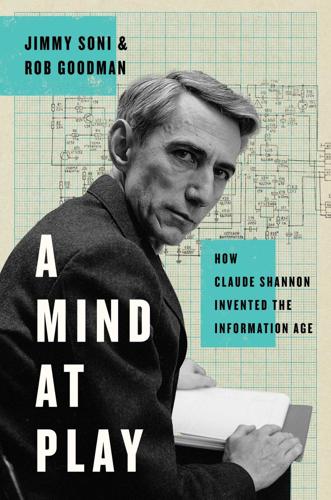
A Mind at Play: How Claude Shannon Invented the Information Age
by
Jimmy Soni
and
Rob Goodman
Published 17 Jul 2017
“He was really lionized”: Quoted in Chiu et al., “Mathematical Theory of Claude Shannon.” “If I’m going to spend”: Leonard Kleinrock, interviewed by the authors, September 16, 2016. “I can’t be an advisor”: Quoted in Guizzo, “The Essential Message,” 61. “I was in such awe of him”: Robert Gallager, interviewed by the authors, August 8, 2014. “I always felt honored”: Leonard Kleinrock, interviewed by the authors, September 16, 2016. “I was just so impressed”: Quoted in Guizzo, “The Essential Message,” 59. “His classes were like”: Leonard Kleinrock, interviewed by the authors, September 16, 2016. “For some problems”: Quoted in ibid., 60.
…
“For some problems”: Quoted in ibid., 60. “He was not the sort of person”: Robert Gallager, interviewed by the authors, August 8, 2014. “We all revered Shannon”: Quoted in Guizzo, “The Essential Message,” 59. “He said, ‘Why don’t you’”: Leonard Kleinrock, interviewed by the authors, September 26, 2016. “Shannon’s favorite thing to do”: Larry Roberts, interviewed by the authors, September 16, 2016. “I had what I thought”: Robert Gallager, interviewed by the authors, August 8, 2014. “People would go in”: Irwin Jacobs, interviewed by the authors, January 1, 2015. “He did a lot of work at home” . . . “Did you know”: Peggy Shannon, interviewed by the authors, December 9, 2015.
…
“For him, the harder a problem”: George Johnson, “Claude Shannon, Mathematician, Dies at 84,” New York Times, February 27, 2001. “Courage is one of the things”: Richard Hamming, “You and Your Research,” lecture, Bell Communications Research Colloquium Seminar, March 7, 1986, www.cs.virginia.edu/~robins/YouAndYourResearch.html. “When you work with someone like Shannon”: Leonard Kleinrock, interviewed by the authors, September 16, 2016. “I’ve been more interested”: Shannon, interviewed by John Horgan (unpublished). “He was not interested”: Henry Pollak, interviewed by the authors, August 7, 2014. “Shannon’s puzzle-solving”: Robert Gallager, “The Impact of Information Theory on Information Technology,” lecture slides, February 28, 2006.
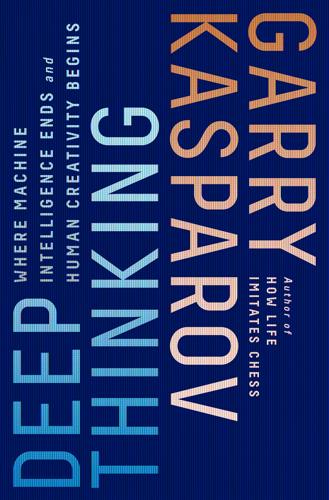
Deep Thinking: Where Machine Intelligence Ends and Human Creativity Begins
by
Garry Kasparov
Published 1 May 2017
Every year, the Dan David Foundation and Tel Aviv University give out prizes that “recognize and encourage innovative and interdisciplinary research that cuts across traditional boundaries and paradigms.” Leonard Kleinrock of UCLA was there to receive in the category of “The Future—Computers and Telecommunications.” As a slideshow presented the audience with a summary of Kleinrock’s achievements, I excitedly whispered to my wife, Dasha, “That’s him! That’s the guy who sent the ‘l’ and the ‘o’!” On October 29, 1969, Leonard Kleinrock’s lab sent the very first letters over ARPANET from his computer at UCLA to another machine at Stanford. They attempted to send the word “login” but the system crashed after the first two letters had gone through.
…
Then the 1973 Mansfield Amendment limited DARPA appropriations to projects with direct military application, a heavy blow to government support of basic research in the sciences and a death blow to relatively unproductive fields like AI was turning out to be, at least in the eyes of the Defense Department. They wanted expert systems for recognizing bomb targets, not machines that could talk. Leonard Kleinrock was still at UCLA, but he turned out to be our neighbor on the Upper West Side of Manhattan. He was gracious enough to share with me some of his thoughts on why and how ARPA (as he always insisted on calling it) fell from grace as an engine for AI and other tech innovation. His first conclusion was not surprising: the growing government bureaucracy stifled communication and innovation.
…
The era when giant multinational companies like Bell and government programs like DARPA would pour money into basic research and experimental projects is over. R&D budgets have been slashed over the years as investors take a skeptical view of anything that doesn’t feed the bottom line. Government-backed research tends to favor specific gadgets to fit an existing need, not ambitious, open-ended missions to answer big questions like Leonard Kleinrock’s “How do we get every computer in the world to talk to each other?” The Oxford Martin School at Oxford University has collected quite a few of these exceptional people, and also encourages the sort of interdisciplinary associating and free-associating that has gone out of fashion in this era of specialization, benchmarks, and ninety-page grant applications.

Algorithms to Live By: The Computer Science of Human Decisions
by
Brian Christian
and
Tom Griffiths
Published 4 Apr 2016
“handheld, portable, real cellular phone”: Martin Cooper, “Inventor of Cell Phone: We Knew Someday Everybody Would Have One,” interview with Tas Anjarwalla, CNN, July 9, 2010. The message was “login”—or would have been: Leonard Kleinrock tells the story in a 2014 video interview conducted by Charles Severence and available at “Len Kleinrock: The First Two Packets on the Internet,” https://www.youtube.com/watch?v=uY7dUJT7OsU. portentous and Old Testament despite himself: Says UCLA’s Leonard Kleinrock, “We didn’t plan it, but we couldn’t have come up with a better message: short and prophetic.” The tiles on the floor of UCLA’s Boelter Hall, if their colors are interpreted as binary 0s and 1s and parsed as ASCII characters, spell out the phrase “LO AND BEHOLD!”
…
Phone calls use what’s called “circuit switching”: the system opens a channel between the sender and the receiver, which supplies constant bandwidth between the parties in both directions as long as the call lasts. Circuit switching makes plenty of sense for human interaction, but as early as the 1960s it was clear that this paradigm wasn’t going to work for machine communications. As UCLA’s Leonard Kleinrock recalls, I knew that computers, when they talk, they don’t talk the way I am now—continuously. They go blast! and they’re quiet for a while. A little while later, they suddenly come up and blast again. And you can’t afford to dedicate a communications connection to something which is almost never talking, but when it wants to talk it wants immediate access.
…
., Alison Hewitt, “Discover the Coded Message Hidden in Campus Floor Tiles,” UCLA Newsroom, July 3, 2013, http://newsroom.ucla.edu/stories/a-coded-message-hidden-in-floor-247232. rooted in the Greek protokollon: See, e.g., the Online Etymology Dictionary, http://www.etymonline.com/index.php?term=protocol. “They go blast! and they’re quiet”: Leonard Kleinrock, “Computing Conversations: Len Kleinrock on the Theory of Packets,” interview with Charles Severance (2013). See https://www.youtube.com/watch?v=qsgrtrwydjw as well as http://www.computer.org/csdl/mags/co/2013/08/mco2013080006.html. “utter heresy”: Jacobson, “A New Way to Look at Networking.”

How We Got Here: A Slightly Irreverent History of Technology and Markets
by
Andy Kessler
Published 13 Jun 2005
One of the issues of the day was the idea that a nuclear blast (I’ve learned never to trust anyone that pronounces it nu-cu-ler) would wipe out the phone network and all communications lines and disable the command and control structure of U.S. defense. The president could order a launch, but if no one could get the message, what would be the use? In 1961, Leonard Kleinrock at MIT proposed a PhD thesis called “Information Flow in Large Communication Nets,” and this provided the theory and proof for packet switching, although it wasn’t called packet switching, not yet, and it was still a theory. The North American Aerospace Defense Command or NORAD was in charge of early warning and control.
…
They were connected by a 50-kilobit per second connection that AT&T provided. One can imagine that AT&T was not at all enthusiastic about the project, since packet switching endangered the phone network. But there was probably pressure to act patriotically - plus the government paid good money. Leonard Kleinrock, the MIT theorizer, of course joined the ARPANET project, since it was his theory being implemented. I sat next to him at a dinner in 2000, and he gladly recounted the story: He was at UCLA and on the phone to Stanford. “OK, we are about to send an ‘L’, let me know when you see it,” Kleinrock told the Stanford folks.

The Future of Ideas: The Fate of the Commons in a Connected World
by
Lawrence Lessig
Published 14 Jul 2001
., Telephone Almanac, foreword (1941). 16 Interview with Paul Baran. 17 Ibid. 18 Peter Huber, Orwell's Revenge: The 1984 Palimpsest (New York: Free Press; Toronto: Maxwell Macmillan Canada; New York: Maxwell Macmillan International, 1994), 268-69; Huber, Kellogg, and Thorne, 416. 19 And the decision was reversed by the D.C. circuit. Hush-a-Phone Corp. v. United States, 238 F. 2d 266 (D.C. Cir., 1956). 20 The idea is developed in Kleinrock's dissertation: Leonard Kleinrock, Message Delay in Communication Nets with Storage (1962, unpublished Ph.D. dissertation, Massachusetts Institute of Technology), which was later published in a modified form. See Leonard Kleinrock, Communication Nets: Stochastic Message Flow and Delay (New York: McGraw-Hill, 1964). See also John Naughton, A Brief History of the Future: The Origins of the Internet (London: Weidenfeld & Nicolson, 1999), 92, 118-19 (discussing other earlier contributors to the Internet). 21 Baran attributes to him the discovery of the term.
…
As long as they flowed fast enough, and the computers at both ends were quick, the conversation encoded in this packet form would seem just like a conversation along a single virtual wire across the ocean. Baran was probably not the first person to come up with this idea—MIT loyalists insist that that was Leonard Kleinrock.20 And he was also not the only person working on the idea in the early 1960s. Independently, in England, Donald Davies was developing something very similar.21 But whether the first, or the only, doesn't really matter for our purposes here. What is important is that Baran outlined a telecommunications system fundamentally different from the dominant design, and that different telecommunications system would have effected a radically different evolution of telecommunications.
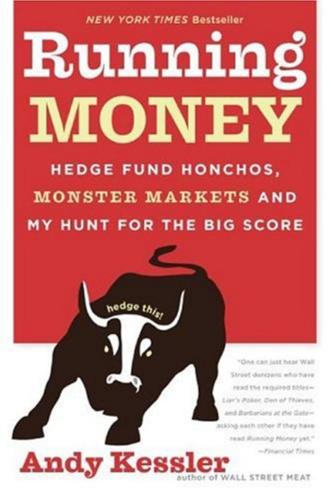
Running Money
by
Andy Kessler
Published 4 Jun 2007
It was lunchtime at George Gilder’s Telecosm conference, and we were waiting for the featured speaker, Gary Winnick of Global Crossing, to explain how he sends billions of packets per second under the Atlantic Ocean. George Gilder has hosted his Telecosm conference for years. Tech luminaries like Carver Mead, Bob Metcalfe and Paul Allen were regulars. “I don’t know what the first packet was,” I confessed. My tablemate turned out to be Leonard Kleinrock, a UCLA professor, according to his name tag. It turned out that he had been at the creation. Since the 1978 introduction of the Apple II computer, to the 1981 announcement of the IBM PC, the world has been flooded with smaller, cheaper and faster computers. More than 100 million new ones get sold every year.
…
No one thought this out; it just happened that phone lines were running everywhere, so as computers were placed in the same everywhere, they used the phone network to communicate. The problem is that from the very beginning, the phone network cut corners. Fortunately, the Cold War gave us packets. “It was the fall of 1969,” Leonard Kleinrock started. I think I was watching The Munsters back then. “We had the first IMP from BBN. I think it cost ARPA around $10,000. Which doesn’t seem like much until you remember that a Volkswagen Beetle cost $2000.” “We?” I asked. “Oh, sorry, UCLA.” “Was Lew Alcindor involved in all of this?” “Who?”
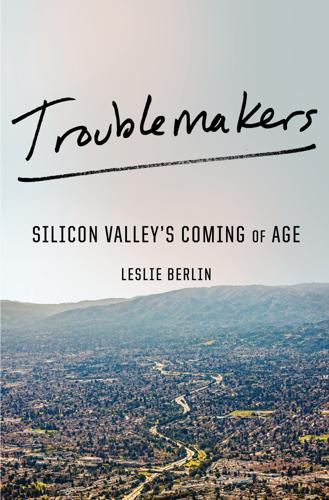
Troublemakers: Silicon Valley's Coming of Age
by
Leslie Berlin
Published 7 Nov 2017
A great blow-by-blow account of this transmission is Katie Hafner and Matthew Lyon, Where Wizards Stay Up Late: The Origins of the Internet (New York: Simon & Schuster, 1996): 152–4. 2. Leonard Kleinrock, “Memoirs of the Sixties,” in The ARPANET Sourcebook: The Unpublished Foundations of the Internet, ed. Peter Salus (Charlottesville, VA: Peer-to-Peer Communications, 2008): 96. See also “The First Internet Connection with UCLA’s Leonard Kleinrock” at http://www.youtube.com/watch?v=vuiBTJZfeo8, in which Kleinrock says the “Lo” marks “the day the infant Internet uttered its first word.” 3. M. Mitchell Waldrop, The Dream Machine: J.C.R.
…
Taylor has said that neither IBM nor AT&T was interested in the network; indeed, that they were hostile to it. 36. Robert Kahn, CBI interview. Kahn was part of the network buildout from very early on and went on to direct the Information Processing Techniques Office from 1979 to 1985. 37. Wes Clark, CBI interview. Leonard Kleinrock, another key participant (and the man arguing for the significance of “ ‘Lo!’ As in lo and behold!”), says, “Bob set the tone for Larry’s modus operandum. Bob Taylor is a great administrator.” Kleinrock, CBI interview. 38. Those routers were called IMPs. Both Waldrop and Hafner/Lyon go into this ride at some length, though both say it was a taxi ride (unlikely, given the number of people in the vehicle: Blue, Clark, Dave Evans, Roberts, and Taylor).
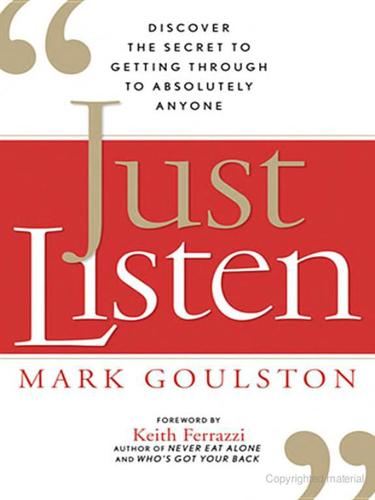
Just Listen: Discover the Secret to Getting Through to Absolutely Anyone
by
Mark Goulston M. D.
and
Keith Ferrazzi
Published 31 Aug 2009
Thanks are due as well to leaders whose most valuable resource is their time, but who nevertheless make time to talk with me: Scott Adelson (Houlihan Lokey); Sharon Allen (Deloitte); Angela Braley (Wellpoint); Jeffrey Berg (ICM); Mike Critelli (Pitney Bowes); Bob Eckert (Mattel); Werner Erhard; Jonathan Fielding (L.A. County Public Health); Jim Freedman (Barrington Associates); Bill George (former CEO, Medtronic and Harvard Business School); Marshall Goldsmith; Jim Goodnight (SAS); Peter Guber (Mandalay); Mark Victor Hansen (Chicken Soup); Frances Hesselbein (Leader to Leader Institute); Leonard Kleinrock (UCLA); Mike Leven (Georgia Aquarium); Jim Mazzo (Advanced Medical Optics); Ivan Misner (BNI); Omar Noorzad (Tri-Cities Regional Center); Tom O’Toole (Hyatt); Bill Quicksilver (Manatt); Carla Sanger (LA’s Best); Scott Scherr (Ultimate Software); Jim Sinegal (Costco); Sir Martin Sorrell (WPP); Bob Sutton (Stanford); Larry Thomas (Guitar Center); Raymond Tye (United Liquors); William Ury (Harvard); David Wan (Harvard Business Publications); and Duane Wall (White & Case).

The System: Who Owns the Internet, and How It Owns Us
by
James Ball
Published 19 Aug 2020
The two institutions were joined with a 50 Kilobits per second connection – a connection around 1/374th the speed of an average modern US broadband account.1 They decided the first thing to do was just use the technology as it was intended, to log in to the other computer remotely. Professor Leonard Kleinrock,2 UCLA’s head of the project, later recalled how researchers at both ends of the communication were simply trying to send and receive the simple command: ‘login’. ‘We had Charley Kline at our end, we had Bill Duvall up at SRI. And just to make sure this thing worked, they had a telephone connection.
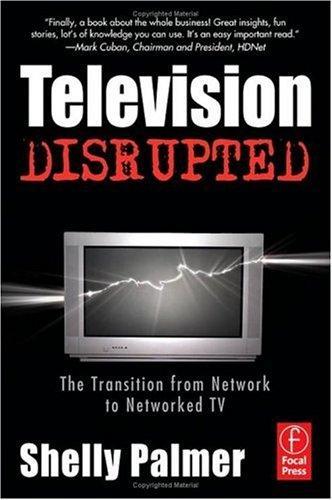
Television disrupted: the transition from network to networked TV
by
Shelly Palmer
Published 14 Apr 2006
Licklider of MIT in the early 1960s. It was conceived as a global network of computers to allow the sharing of scientific and military research. The project was conscripted by the Defense Advanced Research Project Agency (DARPA) in late 1962 and through the work of several now legendary scientists, like Lawrence Roberts, Leonard Kleinrock and Bob Kahn, evolved into the global network of computers it is today. That network, now called the Internet (or simply, the Net) is the transport system that packets of data travel over. Your e-mail, music and video files all live on individual storage devices (like the hard drive in your computer) and get from place to place over the public Internet.
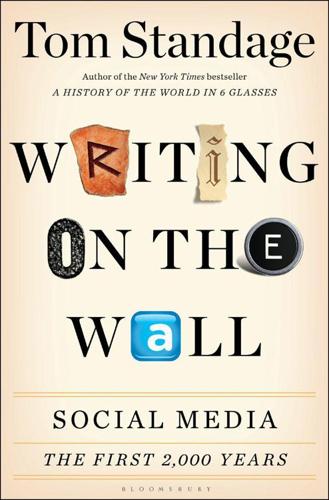
Writing on the Wall: Social Media - the First 2,000 Years
by
Tom Standage
Published 14 Oct 2013
It was the evening of October 29, 1969, and Charley Kline, a twenty-one-year-old student at the University of California, Los Angeles, was working late in the computer lab. UCLA had an SDS Sigma 7 computer, a mainframe that filled an entire room. Several people sitting at separate terminals could use this giant computer at the same time, and Kline could be found writing code on it at all hours of the day and night. That evening Leonard Kleinrock, the professor in charge of the computer lab, asked Kline to help him test a new device that would link the Sigma 7 to another computer at the Stanford Research Institute, four hundred miles away in Menlo Park, California. The project to link computers in this way had begun when Bob Taylor, an official at the Advanced Research Projects Agency (ARPA), the research arm of the U.S.
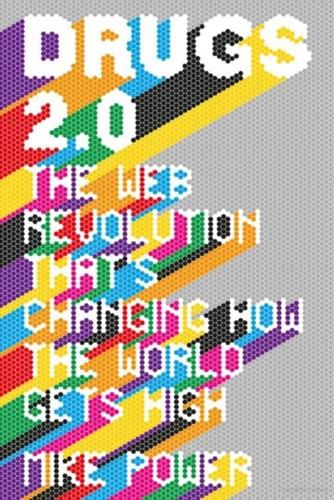
Drugs 2.0: The Web Revolution That's Changing How the World Gets High
by
Mike Power
Published 1 May 2013
The drug and music countercultures and the early technological innovators informed and inspired each other – and were often the very same people. The acronymic utopias enabled by internet technologies such as TCP/IP aren’t so different from those offered by LSD: equality, connectedness, awareness of life as a sum greater than its parts. In the early 1960s, American computer scientist Leonard Kleinrock of the Massachusetts Institute of Technology and Paul Baran of the Rand Corporation, and, later, Britain’s Donald Davies, a physician at the UK’s National Physical Library in Teddington, independently conceived of the same way to send data around a telephone network efficiently by splitting it into chunks and routing it through nodes around the network to later arrive, reassembled, in the right place.
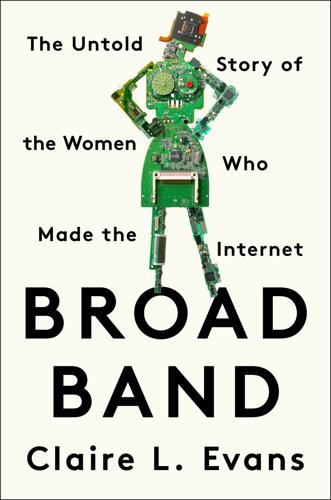
Broad Band: The Untold Story of the Women Who Made the Internet
by
Claire L. Evans
Published 6 Mar 2018
“Mother of all Demos”: It also ran on an SDS-940—and according to some accounts, the very same machine that eventually made its way to Resource One. “He would come down and say”: Elizabeth “Jake” Feinler, interview with the author, September 1, 2017. The connection crashed halfway through: Leonard Kleinrock, “An Early History of the Internet [History of Communications],” IEEE Communications Magazine 48, no. 8 (August 2010). “I said, ‘What’s a Resource Handbook?’”: Feinler, interview with the author, September 1, 2017. “It was pretty obvious”: Ibid. “the kids ran the machine”: Ibid. Despite these challenges, the Resource Handbook: Garth O.
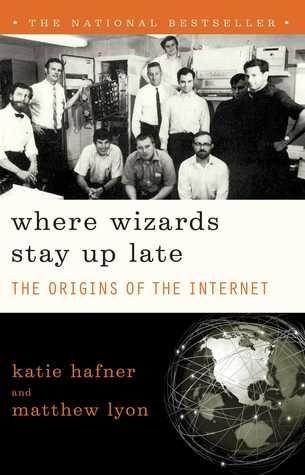
Where Wizards Stay Up Late: The Origins of the Internet
by
Katie Hafner
and
Matthew Lyon
Published 1 Jan 1996
Interconnecting a matrix of machines, each with distinct characteristics, would be exceedingly complicated. To pull it off was probably going to require calling on every expert Roberts knew in every area of computing and communications. Fortunately, Roberts’s circle of colleagues was wide. One of his best friends from Lincoln Laboratory, with whom he had worked on the TX-2, was Leonard Kleinrock, a smart and ambitious engineer who had attended MIT on a full scholarship. If anyone influenced Roberts in his earliest thinking about computer networks, it was Kleinrock. Kleinrock’s dissertation, proposed as early as 1959, was an important theoretical work that described a series of analytical models of communication networks.

Augmented: Life in the Smart Lane
by
Brett King
Published 5 May 2016
“We set up a telephone connection between us and the guys at SRI. We typed the L and we asked on the phone, “Do you see the L?” “Yes, we see the L,” came the response. We typed the O, and asked, “Do you see the O?” “Yes, we see the O.” Then we typed the G, and the system crashed...”5 Prof. Leonard Kleinrock, UCLA, from an interview on the first ARPANET packet-switching test in 1969 In parallel to the development of early computer networks, various computer manufacturers set about shrinking and personalising computer technology so that it could be used at home or in the office. Contrary to popular belief, IBM wasn’t the first company to create a personal computer (PC).

An Optimist's Tour of the Future
by
Mark Stevenson
Published 4 Dec 2010
I’m hoping Vint can give me the big picture on our increasing interconnectedness. After all, he was in at the ground floor of the Internet and now works on the top one. He’s a man with a career-length view on the technology, which for a technology as young as the Net is about the longest view you can have. As a graduate student, Cerf worked under Professor Leonard Kleinrock, who in 1969 oversaw the first computer-to-computer message to be sent using the ‘packet switching’ method that underlies the Internet. Actually, it was two-thirds of a message. Another of Kleinrock’s students, Charley Kline, hoped to send a three-letter message ‘LOG’ to a receiving machine (this being the code for logging on to that computer).

Cryptoassets: The Innovative Investor's Guide to Bitcoin and Beyond: The Innovative Investor's Guide to Bitcoin and Beyond
by
Chris Burniske
and
Jack Tatar
Published 19 Oct 2017
According to one of the Internet’s progenitors, Paul Baran, the key to accomplishing such resilience was decentralization.2 J. C. R. Licklider proselytized the concept of an “Intergalactic Computer Network,” convincing his colleagues at DARPA—which is responsible for investigating and developing new technologies for the U.S. military—of its importance.3 Leonard Kleinrock, an MIT professor, was doing work on packet switching—the technology underpinning the Internet—that would lead to the first book on the subject: Communication Nets. Ironically, though they were all working on a means to connecting the world, many of the early researchers in this period were unaware of one another.
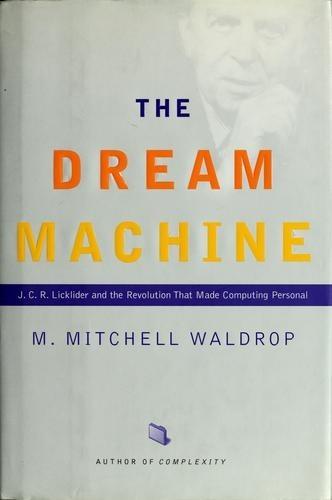
The Dream Machine: J.C.R. Licklider and the Revolution That Made Computing Personal
by
M. Mitchell Waldrop
Published 14 Apr 2001
Perhaps, said Roberts. But the basic techniques were well un- derstood; people had been segmenting the data on tape drives and other error- prone media for more than a decade. And more to the point, the use of packets in networking had been thoroughly analyzed in the 1962 Ph.D. thesis of Roberts's MIT classmate Leonard Kleinrock/- who was now at UCLA. He and Kleinrock had discussed the issues extensively when he was planning the 1 965 experiment, Roberts said. And the experiment itself had proved that the packet idea would work: the packets arriving on the other side had been reconstructed quite well. Now, those first two conclusions were comparatively straightforward, said Roberts.
…
Presper Eckert, OH 11, OH 13, OH 193; Robert M. Fano, OH 165; Edward Feigenbaum, OH 14, OH 157;Jay Forrester, OH 16; Howard Frank, OH 188; Bernard A. Galler, OH 236; Herman H. Goldstine, OH 18, OH 19; Frank Heart, OH 186; George H. Hellmeler, OH 226; Charles Herzfeld, OH 208; Cuthbert C. Hurd, OH 261; Robert E. Kahn, OH 158, OH 192; Leonard Kleinrock, OH 190;J. C. R. LICklIder, OH 150; Stephen Lukasik, OH 232; John William Mauchly, OH 26, OH 44; Kathleen Mauchly, OH 11 ;John McCarthy, OH 156; Alexander A. McKenzie, OH 185; Marvin L. Minsky, OH 179; Allen Newell, OH 227; Bernard More OlIver, OH 097; Severo Ornstein, OH 183, OH 258; RaJ Reddy, OH 231; Dennis Ritchie, OH 239; Lawrence G.
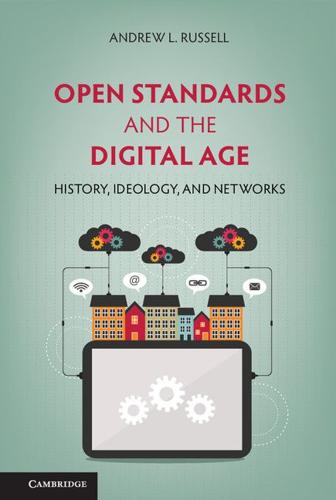
Open Standards and the Digital Age: History, Ideology, and Networks (Cambridge Studies in the Emergence of Global Enterprise)
by
Andrew L. Russell
Published 27 Apr 2014
From 1984 to 1986 the IAB was the Internet Advisory Board; in 1986, its name changed to the Internet Activities Board; in 1992 it changed once again, this time to the Internet Architecture Board. See Internet Architecture Board, “A Brief History of the Internet Advisory/Activities/Architecture Board,” http://www.iab.org/about/history/ (accessed January 3, 2012). 26 Internet Architecture Board, “A Brief History”; Barry M. Leiner, Vinton G. Cerf, David D. Clark, Robert E. Kahn, Leonard Kleinrock, Daniel C. Lynch, Jon Postel, Larry Roberts, and Stephen Wolff, “A Brief History of the Internet,” http://www.isoc.org/internet/history/brief.shtml (accessed September 25, 2013); Kahn interview, Charles Babbage Institute; Vinton Cerf (1990), “The Internet Activities Board,” RFC 1160, http://tools.ietf.org/rfc/rfc1160 (accessed September 25, 2013); Ed Krol (1993), “FYI on ‘What Is the Internet?’”
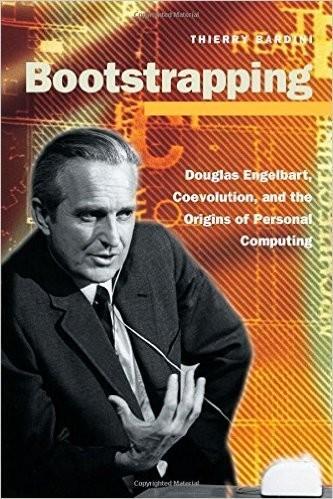
Bootstrapping: Douglas Engelbart, Coevolution, and the Origins of Personal Computing (Writing Science)
by
Thierry Bardini
Published 1 Dec 2000
After the initial stages of planning, most of the collaborative effort was taken on by the Network Working Group (NWG), a more formal reorganization of the informal committees of contractors decided by Larry Roberts (Norberg and O'Neill 1996, 167). In fact, Roberts organized the network implementation around three different teams with various contracts and links between them: the NWG itself; 6 Leonard Kleinrock and his team of graduate students (in- cluding Steve Crocker, Vint Cerf, and Jon Postel) at UCLA, which was to be- ARPANET, E-matl, and est 185 come the Network Measurement Center (NMC); and finally, Douglas Engel- bart and his staff, which was to become the Network Information Center (NIC).
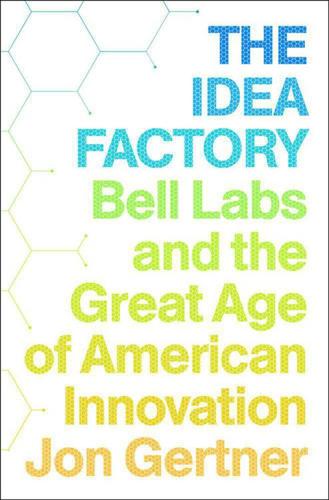
The Idea Factory: Bell Labs and the Great Age of American Innovation
by
Jon Gertner
Published 15 Mar 2012
David Gerry DiPiazza Phil DiPiazza Irwin Dorros Robert Dynes George Eberhardt Chuck Elmendorf Joel Engel Alan English Gary Feldman Bill Fleckenstein Dick Frenkiel Robert Gallager Ted Geballe Randy Giles Eugene Gordon Robert Gunther-Mohr David Hagelbarger Ira Jacobs Bill Jakes Mary Jakes William Keefauver Jeong Kim Leonard Kleinrock Herwig Kogelnik Henry Landau Arthur Lewbel Tingye Li Sandy Liebsman Bob Lucky John MacChesney Max Mathews John Mayo Brock McMillan Debasis Mitra Cherry Murray Michael Noll Doug Osheroff Joe Parisi Arno Penzias Henry Pollak Ian Ross John Rowell Mannfred Schroeder Betty Shannon David Slepian Neil Sloane Dave Stark Morris Tanenbaum Robert Von Mehren SELECTED ORAL HISTORIES William O.
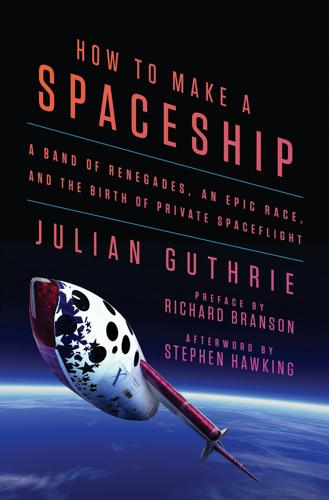
How to Make a Spaceship: A Band of Renegades, an Epic Race, and the Birth of Private Spaceflight
by
Julian Guthrie
Published 19 Sep 2016
*O’Neill invented the storage ring technique for particle colliders, which led to the building of the Stanford Linear Accelerator Center. He also invented a mass driver to move materials mined on the Moon into Earth orbit. *The ARPANET was the first packet-switched network. Packet-switched networks were the work of many hands: Leonard Kleinrock (UCLA) and Paul Baran (RAND), as well as Bob Kahn (DARPA), who is related to futurist and nuclear strategist Herman Kahn, and Vint Cerf, who connected with Kleinrock at UCLA, worked with Kahn at DARPA, and works at Google. ARPANET was all about breaking down messages into little self-contained packets like postcards that have a “from” and “to” address and can shuttle through a heterogeneous network of cooperating computers.

WTF?: What's the Future and Why It's Up to Us
by
Tim O'Reilly
Published 9 Oct 2017
But add the idea of fitness functions and a fitness landscape to his insight that simple systems are able to evolve in ways that surprise their creators and you have a powerful tool for seeing and understanding how computer networks and marketplaces work. The Internet itself proves the point. In the 1960s, Paul Baran, Donald Davies, Leonard Kleinrock, and others had developed a theoretical alternative called packet switching to the circuit-switched networks that had characterized the telephone and telegraph. Rather than creating a physical circuit between the two endpoints for the duration of a communication, messages are broken up into small, standardized chunks, shipped by whatever route is most convenient for each packet, and reassembled at their destination.

The Rise of the Network Society
by
Manuel Castells
Published 31 Aug 1996
Key technological players in the 1960s–1970s were, among others, J. C. R. Licklider, Paul Baran, Douglas Engelbart (the inventor of the mouse), Robert Taylor, Ivan Sutherland, Lawrence Roberts, Alex McKenzie, Robert Kahn, Alan Kay, Robert Thomas, Robert Metcalfe, and a brilliant computer science theoretician Leonard Kleinrock, and his cohort of outstanding graduate students at UCLA, who would become some of the key minds behind the design and development of the Internet: Vinton Cerf, Stephen Crocker, Jon Postel, among others. Many of these computer scientists moved back and forth between these various institutions, creating a networked milieu of innovation whose dynamics and goals became largely autonomous from the specific purposes of military strategy or supercomputing linkups.